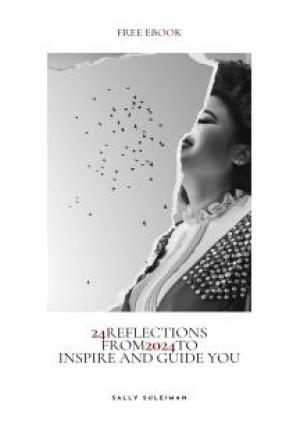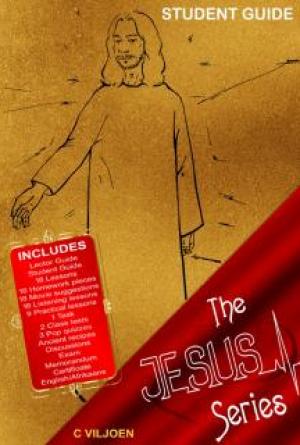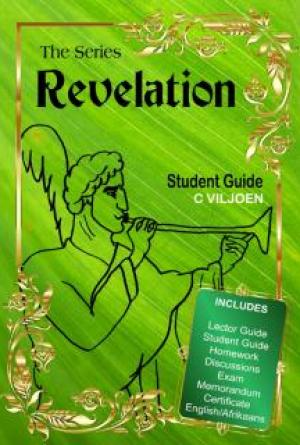Computer Use
Hazards associated with computer use
• Repetitive strain injury
• Neck, shoulder and back pain
• Eye strain
• Headaches
Training
Attend a computer use and ergonomics course.
Chair
• Use an adjustable chair, comfort is important.
• Adjust your seat height so that your forearms are parallel to the floor, or sloping slightly downward when using the keyboard. Your shoulders should be relaxed and not hunched. Elbows and upper arms should be close to your body.
• Adjust the backrest angle of your chair to feel comfortable.
• Using a footrest if required, thighs should be parallel to the floor, or sloping slightly downward. There should be no pressure caused by the front edge of the seat under your thighs.
Monitor
• Your monitor should be directly in front.
• The screen should be located at a comfortable viewing distance - approximately an arm’s length away.
• The top of the screen should be at eye height.
• Eliminate glare and reflections.
Mouse
• Use a mouse mat, close to the keyboard, to prevent over-reaching.
• Use a straight wrist.
Portable computers
Where possible, connect portable computers to an external keyboard and mouse.
Position screen above desk height (see above), or consider using an external monitor.
Go to Contents
Breaks
Have a break to relieve the fixed posture and fixed visual focus. Varying the task throughout the day is best. For extended computer work, short frequent breaks for say 2-3 minutes every 20-30 minutes is recommended. Moving is good.
Maintenance
Keep your equipment is good working order. Screen flicker, sticking keys on keyboards, and rough-running mice should be adjusted or repaired.
Go to Contents
CHP
General
1) Every person working in CHP/ RLS shall follow the Rules, Regulations, Circulars made under the Mines Act-1952.
2) Every person shall wear helmet and safety shoes while on duty.
3) Persons working at high places shall use safety belt.
4) Persons working on electrical and welding job shall wear appropriate hand gloves.
5) Persons working at dusty places shall use dust mask.
6) In case of any accident/ incident the matter shall be brought to the notice of the engineer / supervisor on duty.
7) Every person shall mark his attendance at time office before start of work.
Starting of Belt
1. First Siren has to be blown.
2. Start the belt a bit for two times.
3. Then start the belt.
4. Then start Crusher.
5. Then start Chain Conveyor.
Shut-Down -procedure
1. Take Electrical shut down of the machine from the transformer with proper procedure
a) Only authorized persons/Electrical supervisor/Engineer should take shut Down.
b) Electrical panel should be in lock& key after shut down.
c) Danger board/Men at work Board should be placed on the same panel.
d) Shut Down should be taken in a prescribed format I,e in shut Down report book and one copy should be retained by the concerned supervisor who is taking the shut Down.
e) After completion of the job the concerned supervisor will return the shut Down paper to the engineer.
Go to Contents
f) The electrical supervisor/Engineer will unlock & give clearance.
g) Where locking arrangement is not available the power fuse will be retained by the concerned supervisor who is taking the shut down.
2. If any immediate danger is seen on the Conveyor belt pull cord system to be operated. The pull cord should not be reset unless the man who has operated the pull cord give clearance.
3. The Belt operator should start the chain first and then only green signal should be given for unloading of the coal in the hopper.
4. Bunker should not be filled above the bunker height.
5. When the Crusher is not in operation Red signal should be given by the operator.
6. When the Red signal is on no tipper should dump coal in the hopper of the crusher.
7. In NO CASE pull cord is to be by passed.
CHP
1) In case of any break down in the plant, the engineer in-charge shall get the plant repaired in its own supervision or through a supervisor authorized for the purpose.
2) Every operator, electrician, mechanic, fitter shall be authorized in writing and they shall be given written instruction about their duty and responsibility.
3) Only vocationally trained persons shall be employed at CHP.
4) All workers shall mark their attendance at the time office.
5) All workers shall wear helmet and safety shoes while on duty.
6) An authorized person shall inspect each and every machine of the plant at the beginning of each shift. The defective machine shall be kept stopped till the defect is rectified.
7) One responsible supervisor shall completely inspect each machine once in seven days and record it in a bound paged book.
8) One responsible electrician shall inspect the electrical parts of the plant once in 24
hours and shall record it in a bound paged book.
9) The plant engineer shall check these records daily and shall arrange for rectification of the recorded defects.
Go to Contents
10) The operator shall blow siren before start of the machine and shall ensure that every body is away from the moving parts of the plant/ machine.
11) Before starting the crusher, the operator shall ensure that there is no body inside the crusher.
12) Greasing, repairing and cleaning is not allowed in moving machines.
13) Belt repair and checking is not allowed in moving belt.
14) The person who works in grizzly to break stone must use safety belt.
15) The plant shall be well lighted. The electrician shall check the lighting every day and shall repair the defective ones.
16) The following safety procedures shall be followed.
a) Every fly wheel and moving parts shall be fenced. The fencing should be of such a type that it can be removed for inspection when required.
b) Every winch shall be provided and used with a stopper, pawl or other reliable holder.
c) No person in close proximity to moving machinery shall wear or permitted to wear, loose outer clothing.
d) Sufficient fire extinguishers shall be kept in readiness to deal accidental fire.
These extinguishers shall be checked at regular intervals.
e) Proper arrangements shall be made to suppress dust generation and propagation at loading, discharge and transfer points.
17) Audio visual alarm shall be given before start of each belt and operator shall ensure that there is no body on or beside the belt.
18) No body is allowed to stand or walk on the belt.
19) Proper guards and tools shall be used for cleaning of moving parts under the running belt.
Go to Contents
20) No body shall cross above or below the belt, except on over bridge or under bridge.
Bunker
1) No body is allowed to work inside the bunker, until the belt is stopped.
2) Only authorized persons shall be allowed to work inside the bunker under the supervision of a responsible supervisor.
3) Only experienced persons shall be allowed to work inside the bunker.
4) The man working in bunker shall use safety belt while on job and the link of the belt shall be from the top.
5) There must be a permanent ladder fixed to the wall of the bunker.
6) If truck loading is allowed in the bunker, then no body shall ride on the top of the cabin of the truck.
Tippers at CHP
1) All the tippers will stand in a queue at the entrance of the CHP and the minimum distance between two tippers is to be 05 meters.
2) The driver shall sit in the cabin and shall not get down at the CHP.
3) The supervisor shall direct the driver on which hopper/ circuit he shall unload.
4) At any time one tipper shall be allowed to unload in a circuit. The next tipper in the queue shall be allowed after the first one unloaded the coal.
5) The vehicle in the queue shall blow horn before proceeding.
6) Green and red lights are provided in front of CHP hopper. Unloading is permitted when the green light is ON and it is not when the red light is ON.
7) The tippers while reversing for unloading shall reverse in a safe way.
Go to Contents
8) Before unloading, the driver shall apply parking brake and then only lift the DALA.
After unloading he shall lower the DALA, release the parking brake, blow horn and then shall move forward. During the complete procedure, the driver shall sit inside the cabin.
9) If at any time the driver feels unsafe, he shall inform the nearby supervisor.
10) The driver shall move the empty tipper on the marked empty road.
11) Above procedure is applicable to all tippers coming to CHP at all the times.
12) No person is allowed within the tipping zone and on the entrance and exit path of tipper.
13) General administration and safety is the responsibility of the over man/ mining sirdar present on duty at the CHP.
14) The security guard on duty at CHP shall help the OM/MS in maintaining administration.
Cleaning of Belt Conveyor
1) Cleaning of each part of every belt shall be under the direct supervision of a fitter or Foreman.
2) The following guidelines shall be followed when any fencing on the belt is required to be removed for cleaning purposes.
a) Stop the belt first, according to the shut down procedure.
b) If cleaning is done by removing the fencing, then the belt should be started after fitting the fencing,
3) Long handle hand shovel shall be used for cleaning.
4) No person shall wear loose outer clothing. No person shall tie muffler on his neck.
Go to Contents
COMPRESSED AIR
1. Before starting the compressor, be sure the manual and all warning signs have been completely read.
2. Pipes should be properly labeled that carry compressed air and the direction of air flow correctly labeled with an arrow. Shutoff valves should be properly labeled and identified so air can be shut off quickly in an emergency situation.
3. Hoses, fittings, regulators, and valves should be inspected periodically for leaks, damage, and other defects.
4. Goggles must be worn over safety glasses when cleaning with compressed air.
5. Flexible air hoses should be kept as short as possible to minimize tripping hazards and to reduce whipping action in the event a hose would fail.
6. High pressure jacketed lines should be anchored at several points to prevent them from whipping.
7. Quick disconnect fittings should be installed on flexible air hoses in high fire hazard areas; the hoses can be disconnected quickly, preventing whipping actions that might not only cause injury and damage but also stoke a fire.
8. Use a vacuum system rather than compressed air for cleaning whenever possible. Vacuuming stirs up less dust and other particles than an air compressor does.
9. DO NOT use compressed air to: Transfer flammable liquids. Static electricity build-up can discharge and ignite the liquid. Empty containers. The container could rupture due to excessive interna pressure. Clean clothes, hair, or skin.
10. When using compressed air, direct air away from eyes and skin.
11. To reduce noise exposure and prevent exhaust from the equipment or tool, direct the pressure relief valve away from work areas.
Go to Contents
ENSURING ATTENDANCE AND CHECKING IDENTITY CARD/DRIVING
LICENCE OF CONTACTUAL DRIVERS/ OPERATOR/SUPERVISORS.
1- All the contractual drivers loading machine operators/supervisors shall carry a identity card issued by the contractor-No person will be allowed in the mine without a valid I- card.
2- The I- card shall contain, photograph of the person, number in form ‘B’, blood group & other details.
3- To ensure the compliance of provisions of code 1 and 2 a security guard shall be deputed to check the I-Card of the driver/ operators/ supervisors and shall note down the entry time of tippers in a bound paged book.
4- The attendance clerk shall mark attendance of the drivers/operators/supervisors after checking I-Card and driving license.
5- I-Card /driving licenses shall also be checked by the mining sirdar/overman deputed at the coal face.
6- The driver of a tipper shall not carry with him other person as passenger.
7- Time our of each tipper shall be marked by the security guard in the bound page book each time when it leaves the barrier.
8- Any contravention of these codes observed by the Security Guard/Attendance clerk / Mining Sirdar / overman / Forenman / Under Manager shall immediately reported to the mine manager.
IMPLEMENTATION:
Copy of the code shall be displayed on the notice board of the mine and shall be given to the drivers operators-supervisor-attendance clerk-security guards-mining sirdar- overman- under manger-safety officer-transporting contraction.
Go to Contents







